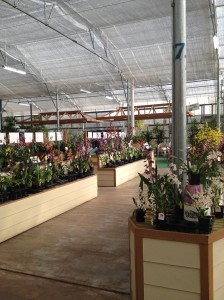Looking at a map, its easy to think that you can make a leisurely day trip, driving around the Big Island of Hawaii, on Hwy’s 11 and 19 that circles the island. You would be badly mistaken in attempting to do so, unless simply driving is your goal.
Since most visitors to the island base their stay in the Kona area on the western shores, let’s start our drive from there. You have 3 options open to you. You can head north and drive along the coast on Hwy 19 until it turns inland towards Waimea (sometimes referred to as Kamuela). You could head south along Hwy 19 (aka Mamalahoa Hwy) or you could take the Saddle Road between Mauna Kea and Mauna Loa, ending in Hilo.
If you were to head north on Hwy 19 (aka Queen Kaahumanu Hwy) and then continued along the shore, rather than heading inland towards Waimea, you would arrive shortly at the Pu’ukohola Heiau National Historical Park. This is the largest heiau in the state and they are working hard on restoring it.
A few miles further along and you will come to Kawaihae Harbor. It is a commercial port and not much there, although they do have a small strip center that houses some of the work of local artisans.
You could continue on Hwy 270 to the northern tip of the island at Upolu Point, near the birthplace of King Kamehameha the Great, just short of the town of Hawi. Hawi is often mentioned as the site of the original King Kamehameha statue., although it is actually located in the town of Kapaau, just beyond Hawi. And, while you’re in the area, the first zip-line on the island of Hawaii operates out of Hawi, Big Island Eco Adventures.

Original King Kamehameha Statue, Kapaau, Big Island
From Hawi, you would take Hwy 270 over the Kohala Mountains and arrive in Waimea and back on Hwy 19. Waimea makes a great spot to stop for lunch…you can stop at McDonald’s or one of the other familiar fast food restaurants or treat yourself to something more local.
Give the Hawaiian Style Cafe a try, located at 64-1290 Kawaihae Rd (aka Hwy 19). They are a locally owned and operated casual, local food eatery. While it will never grab a A+ rating from the Chamber of Commerce for appearance or from Fodor’s for cleanliness or taste, they do have large portions, which is what most of the locals are attracted by, including a monster version of loco-moco. Caution: they close by 1:30 pm, sometimes earlier, if they run out of food for the day.
If you arrive too late or prefer quality rather than just quantity, drive down another mile and give Huli Sue’s a try. It will cost you a bit more than Hawaiian Style Cafe, but the food is excellent. The canning jar drink glasses are a nice touch to this cozy atmosphere…kind of like a scaled down version of Cracker Barrel.
After you’ve had your lunch, continue another 15 minutes or so along Hwy 19 and you’ll come to Honokaa, home of the Hawaiian Holiday Macadamia Nut Company. To be honest, I have not visited their factory, but that doesn’t take away from my enjoying their candies.
Another half-hour towards Hilo, you will come to the turn off for Akaka Falls, about 2 miles off the highway. When you arrive at the parking lot, you will have a half-hour hike ahead of you on a paved trail that takes you by giant bamboo and ferns on the way to the viewing area, across from the falls. (I suggest you take your valuables with you, as there have been break-ins there.)

Part of the walkway to Akaka Falls

Akaka Fallls, Big Island
Twenty minutes or so after leaving Akaka Falls will find you arriving in Hilo. This is kind of the half-way point of your drive around the island. Its also a good place to fill up your gas tank as the gas here is about 15-20 cents a gallon cheaper than it is in the Kona area.
I’ll continue with this drive in Part 2 and Part 3.













